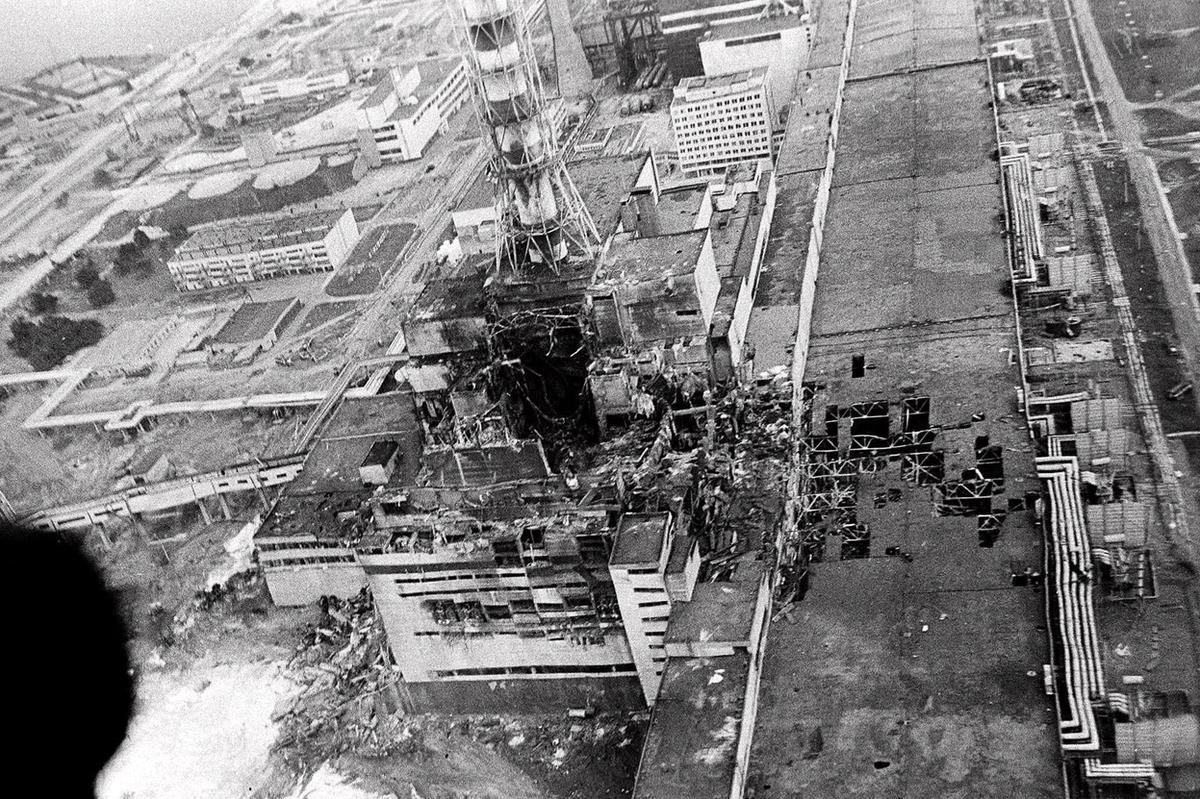
Chernobyl
The nuclear meltdown at the Chernobyl Nuclear Power Plant in Ukraine was widely regarded as the single worst nuclear power disaster the world had ever seen, that is until the triple meltdowns at Fukushima Daiichi in Japan. Both disasters earned a level seven ranking on the International Nuclear and Radiological Event Scale. Seven being the maximum ranking, meaning a widespread release of radiation into the environment.
The Chernobyl reactors are classified as RBMK reactors, which use graphite as a neutron moderator. These types of reactors were originally designed to produce plutonium for weapons but were modified to also produce electricity. They have been found to have several dangerous flaws including instability at low power levels, which ultimately contributed to the meltdown.
The catastrophic meltdown began on April 26th, 1986 when Reactor Unit 4 was put through a planned stress test. Several safety systems were intentionally turned off, coupled with operator error in which the reactor core was arranged in the wrong orientation, and the reactor’s inherent design flaws created the perfect storm for the reactor’s meltdown. The fission reaction quickly became unstable and water turned to steam at an alarming rate, causing an immense buildup of pressure that resulted in an explosion. The graphite moderators were exposed to the air causing them to combust and start a fire. The fire burned for nine days and quickly spread deadly amounts of radioactive isotopes throughout much of Western Europe, heavily impacting an area approximately 58,000 square miles. Radioactive isotopes with the signature that proves they came from the Chernobyl disaster have been found in samples as far away as Sweden. Wild boar in Germany still cannot be eaten because they are radioactive from the radiation they have consumed, as are sheep are in some areas of Wales.
Two of the plant’s operators died in the explosion, while 28 of the firemen and clean up workers died from acute radiation exposure during the immediate aftermath. In the years following the disaster, rates of cancers such as thyroid cancer have spiked, especially in children. A total count of those who have died from cancers caused by radiation poisoning or have contracted cancer related to the disaster during the ensuing years is unclear and will likely remain so, as scientists and health experts who try to uncover the truth face uncooperative governments and risk potential jail time.
Dr. Alexey Yablokov, Dr. Vassily Nesterenko, and Dr. Alexey Nesterenko authored a book edited by Dr. Janette Sherman entitled Chernobyl: Consequences of a Catastrophe for People and the Environment. Published by Blackwell Publishing, the scientific studies within that book indicate that the death toll from Chernobyl will approach 1,000,000 people. Dr. Yury Bandazhevsky was jailed after publishing his scientific report on radiation induced heart disease in children. The disease, named Chernobyl Heart, brought to light the cover-up by the Government of Belarus.
Explore the links below to see our videos and blogposts as well as suggested reading dealing with the Chernobyl Disaster.